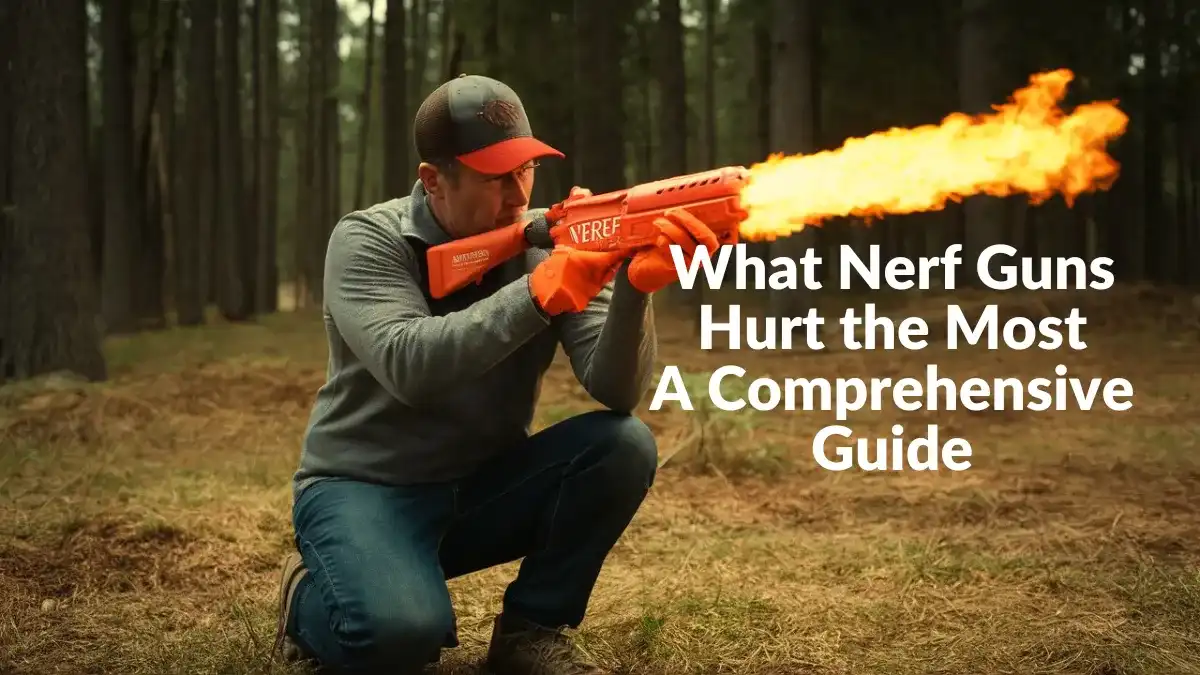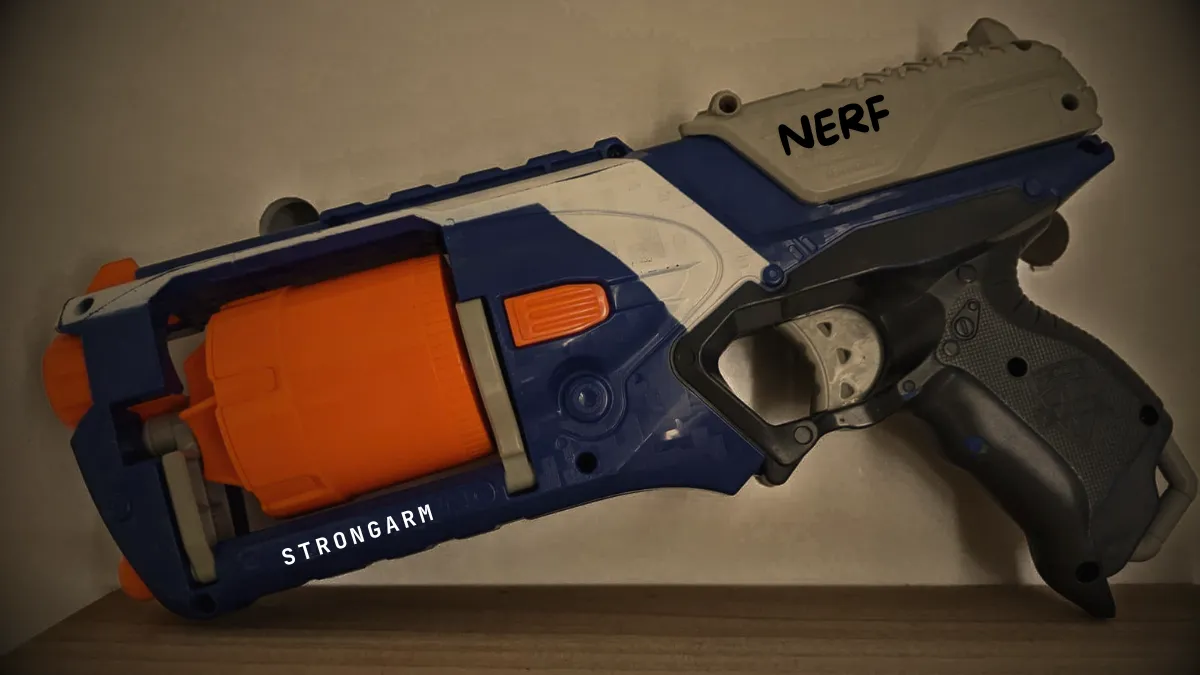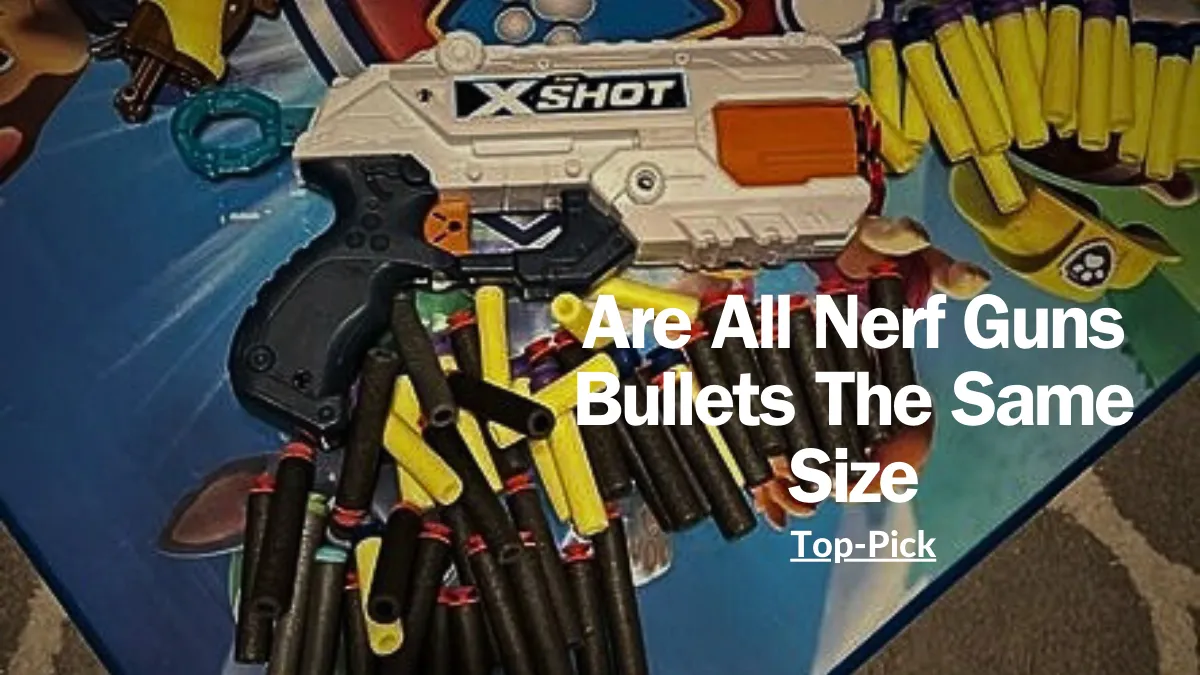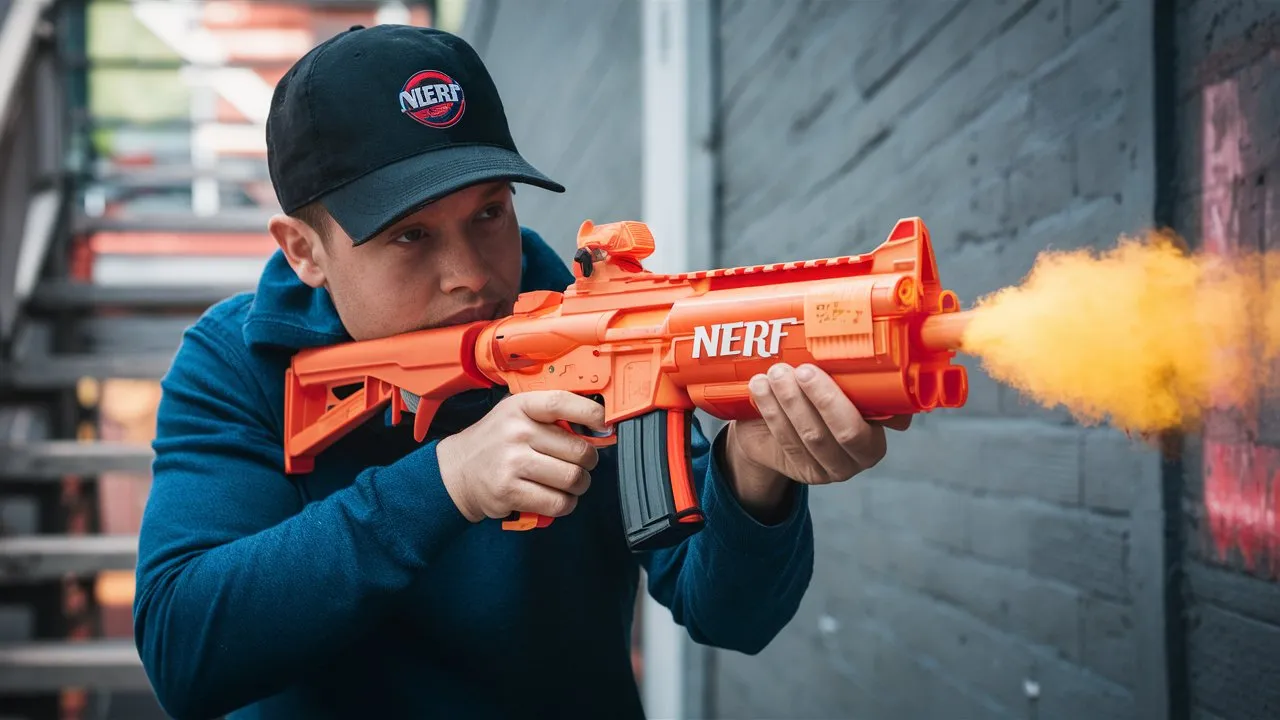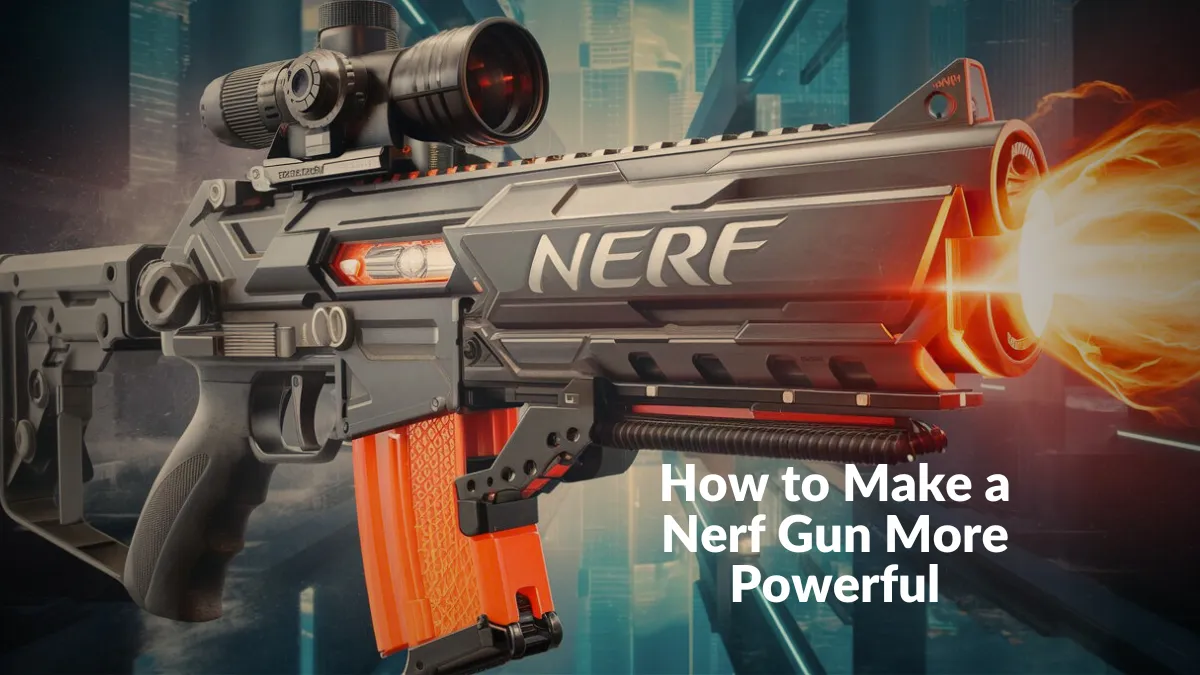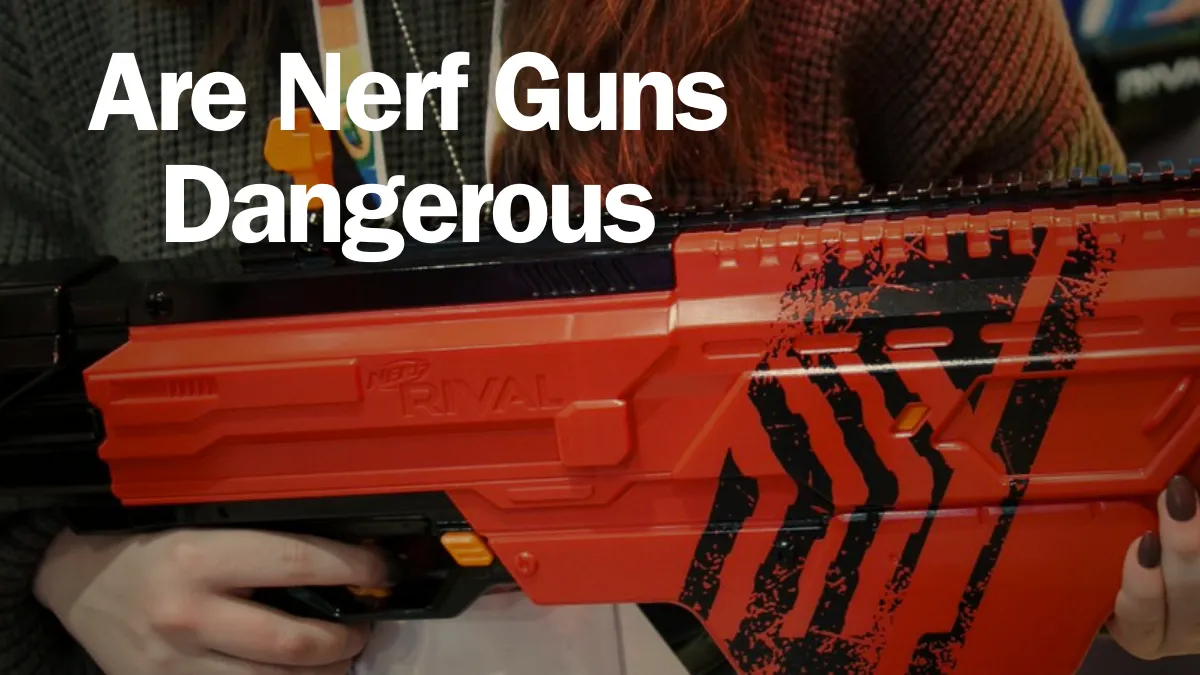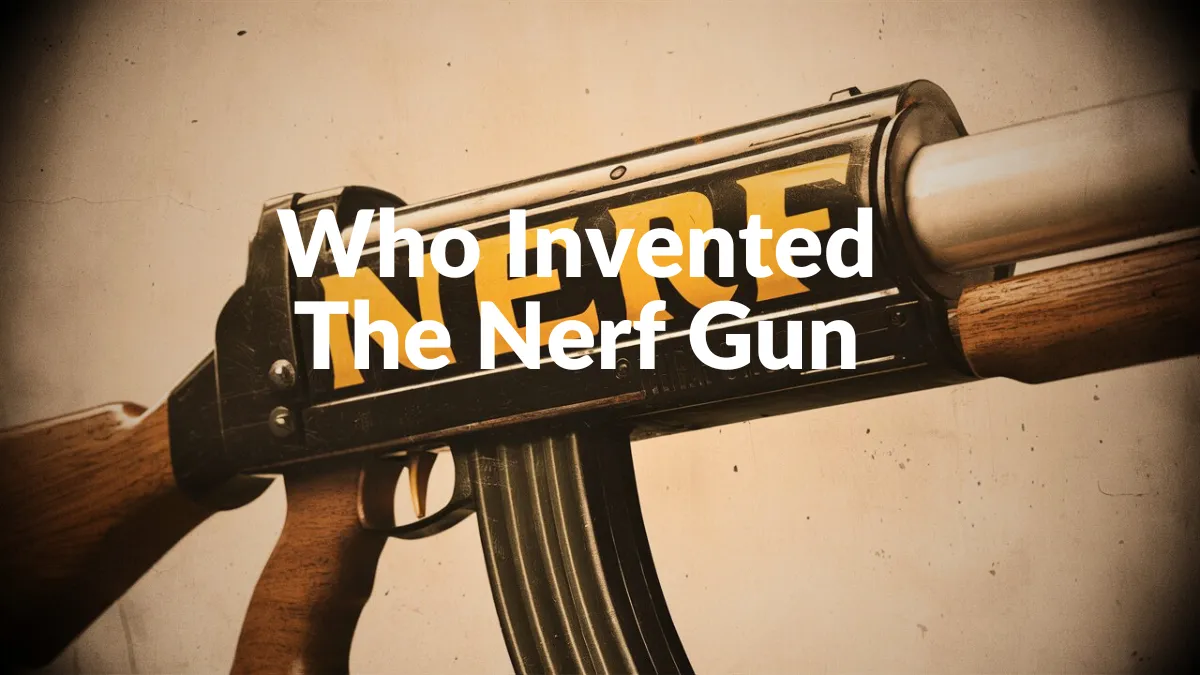When it comes to Nerf guns, one of the most common questions is which ones hurt the most. Whether you’re engaging in a friendly Nerf battle or want to test your pain threshold, it’s important to know which Nerf guns pack the most punch. In this comprehensive guide, we will explore the factors that affect the “hurt” factor, the impact of different blaster types, the influence of modifications and power-ups, performance comparisons, and safety considerations. So, let’s dive in and find out which Nerf guns inflict the most pain!
Factors Affecting the “Hurt” Factor
The “hurt” factor of a Nerf gun depends on several factors that affect its performance. These factors include projectile speed, projectile size and weight, range and distance, pain sensitivity, and the use of protective gear and clothing.
Projectile Speed
One of the primary factors influencing the “hurt” factor of a Nerf gun is the speed at which its projectiles are fired. The higher the velocity, the greater the impact upon contact. Nerf guns with higher projectile speeds are more likely to cause a stinging sensation upon impact.
Projectile Size and Weight
The size and weight of Nerf projectiles also play a role in determining their “hurt” factor. Heavier and larger projectiles can deliver more force upon impact, resulting in a more noticeable sensation. Smaller darts may not cause as much discomfort, but they can still pack a punch when fired from a high-velocity blaster.
Range and Distance
The range and distance that a Nerf gun can shoot also affect its perceived “hurt” factor. Guns with a longer range can hit harder from a distance, while those with shorter ranges may be less impactful. It’s important to consider both the blaster’s maximum range and its effective range to gauge its potential impact.
Pain Sensitivity
Individual pain sensitivity can vary greatly from person to person. Some people may be more tolerant of pain and perceive Nerf gun hits as mere taps, while others may experience more discomfort. Factors such as age, pain tolerance, and individual sensitivity can influence the perceived “hurt” factor when hit by a Nerf gun.
Protective Gear and Clothing
The use of protective gear and clothing can significantly reduce the “hurt” factor of Nerf gun hits. Wearing thick clothing or layers, along with protective goggles, can help cushion the impact and minimize any potential pain. Additionally, wearing appropriate footwear can protect feet from accidental hits.
Blaster Types and Their Impact
The design and type of Nerf blaster can also have an impact on the “hurt” factor. Certain blaster types are known to deliver more power and force due to their internal mechanisms and firing mechanisms.
High-Impact Nerf Guns
High-impact Nerf guns are specifically designed to deliver more force upon impact. They often feature stronger springs or other mechanisms that increase the power of their shots. Blasters labeled as “high-impact” are more likely to cause a noticeable sensation when hit.
Rapid-Fire and Automatic Nerf Guns
Rapid-fire and automatic Nerf guns, as the name suggests, can fire multiple projectiles in quick succession. While each individual dart may not pack as much punch, the sheer volume of shots can increase the likelihood of being hit multiple times, enhancing the perceived “hurt” factor.
Modifications and Power-Ups
Nerf enthusiasts often modify their blasters or use power-ups to enhance performance. These modifications can impact the “hurt” factor in various ways, depending on the type and extent of modifications.
Different Types of Modifications
Modifications can range from simple changes, such as replacing the spring for increased power, to more complex modifications like improving air seals or adding additional barrels for increased projectile velocity. Each modification can potentially increase the “hurt” factor of a Nerf gun.
Popular Power-Ups for Nerf Guns
Power-ups, such as using higher-quality darts or adding special foam padding to darts, can enhance the impact of Nerf gun shots. These power-ups can increase the density or size of the projectile, resulting in a more noticeable sensation upon impact.
Effects of Modifications on Performance
Modifications and power-ups generally improve the performance of Nerf guns, increasing their projectile speed and force. As a result, the “hurt” factor is often increased, making modified blasters more impactful during Nerf battles.
Safety Concerns with Modifications and Power-Ups
While modifications can enhance the “hurt” factor, it’s important to prioritize safety when making changes to Nerf guns. Excessive modifications or unsafe practices can lead to uncontrollable projectiles or compromised blaster integrity, posing a risk to both the user and others. Always follow manufacturer guidelines and exercise caution when modifying Nerf guns.
Guidelines for Modifying Nerf Guns
If you choose to modify your Nerf gun, it’s essential to adhere to guidelines to ensure safe and effective modifications. Research reputable modification sources, understand the potential risks involved, and take necessary precautions. Responsible modification can enhance the “hurt” factor without compromising safety.
Performance Comparison: Accuracy vs. Power
In addition to the “hurt” factor, it’s important to consider the trade-off between accuracy and power when choosing a Nerf gun. Some blasters prioritize accuracy, delivering precise shots with minimal impact. Others prioritize power, sacrificing accuracy for a stronger shot. Consider your preferences and gameplay style to strike the right balance.
Testing and Reviews
When determining the “hurt” factor of a Nerf gun, it can be helpful to refer to testing and reviews. Many Nerf enthusiasts and online communities conduct tests to compare the impact of different blasters. Reviews can provide insights into the real-world experiences of users, helping you gauge the potential impact before making a purchase.
Safety Considerations
While exploring the world of Nerf battles, safety should always be a top priority. Proper safety precautions can minimize the risk of injuries and ensure a fun and enjoyable experience.
Protective Eyewear
Wearing protective eyewear, such as goggles or safety glasses, is essential to protect your eyes from potential injury. Nerf darts can travel at high speeds, and accidental eye hits can cause serious harm. Always prioritize your vision safety during Nerf battles.
Proper Use of Safety Features
Many Nerf guns come with built-in safety features, such as barrel locks or trigger locks, to prevent accidental firing. Familiarize yourself with these features and use them properly to prevent injuries. Always store blasters in a safe position when not in use to avoid accidental discharge.
Supervision and Age Restrictions
Adult supervision is recommended, especially for younger participants in Nerf battles. Ensure that everyone understands the rules and uses the Nerf guns responsibly. Additionally, consider the age recommendations provided by the manufacturer to ensure safe participation.
Safe Storage and Handling
Proper storage and handling of Nerf guns can prevent accidents and maintain their longevity. Store blasters and darts in a secure location away from young children or pets. Always handle Nerf guns responsibly, keeping fingers away from triggers when not in an active play environment.
Warning Labels and Instructions
Read and follow the warning labels and instructions provided by the manufacturer. They contain important safety information specific to each Nerf gun model. Ignoring these instructions can lead to injuries or damage to the blaster.
Conclusion
Determining which Nerf guns hurt the most involves considering various factors, including projectile speed, size, and weight, range and distance, pain sensitivity, and the use of protective gear. Blaster types, modifications, power-ups, and safety considerations also play a significant role in the perceived “hurt” factor. By understanding these factors and prioritizing safety, you can make informed decisions about which Nerf guns offer the most intense gameplay experience.
